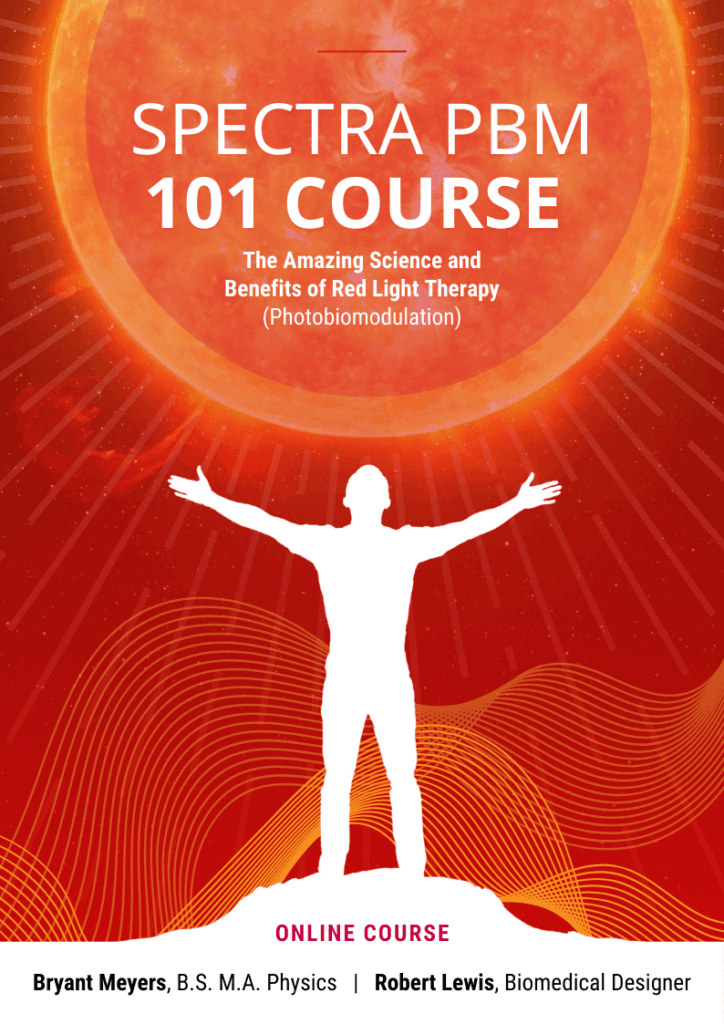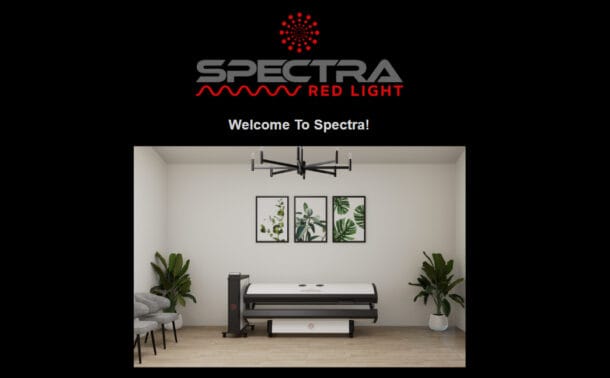The Real Science Behind Accurate Light Therapy Measurements
When it comes to red light therapy, numbers matter. Not just any numbers, though, accurate ones. Welcome to True Irradiance, the gold standard in light therapy measurement.
Let’s review what True Irradiance really means, how it’s measured, and why it matters for science, clinical accuracy, and results.
What Is True Irradiance?
True Irradiance is the accurate measurement of the light energy (irradiance) a therapy device actually delivers to the skin.
In simpler terms:
It’s how much beneficial light power reaches your body, not what’s printed on a spec sheet or used in marketing hype.
Accurate irradiance is critical because dosing in photobiomodulation (PBM), the process of using specific light wavelengths to stimulate biological function, depends entirely on it. If your readings are wrong, your dosing is wrong, and your results can be inconsistent.
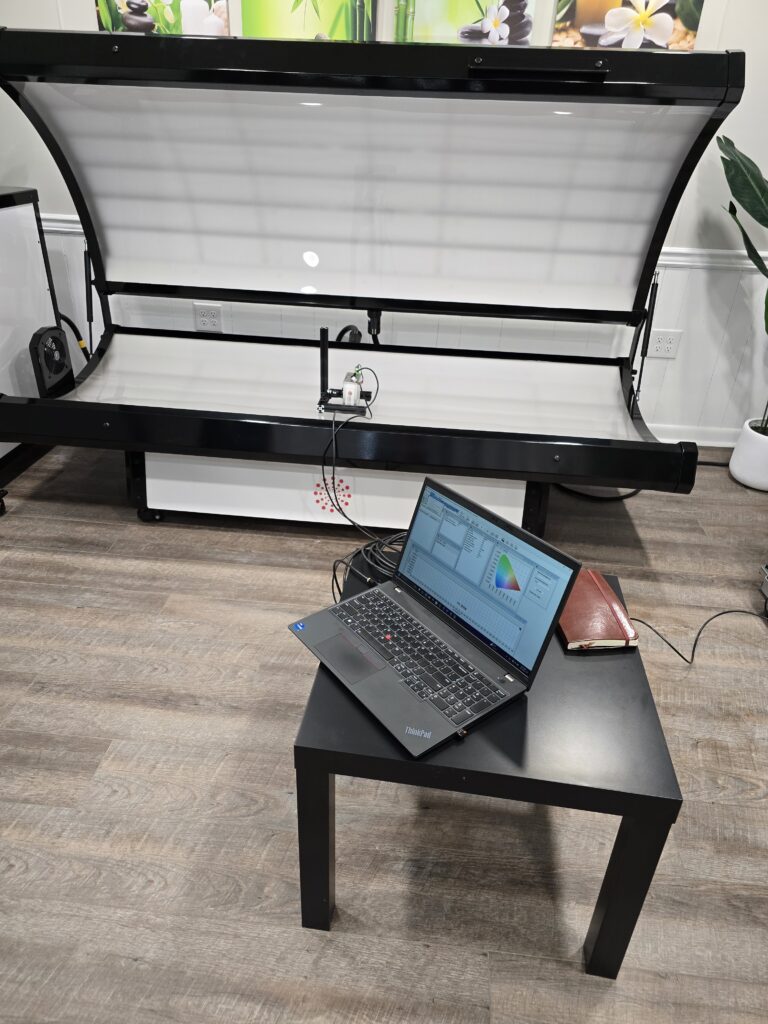
Why True Irradiance
Most published clinical studies on photobiomodulation (PBM) include precise details about the irradiance used, because accurate dosing is the foundation of every successful outcome. Without knowing the True Irradiance, it’s impossible to calculate the correct energy delivered to the body (measured in Joules per square centimeter, J/cm²) or to replicate clinical results. True Irradiance ensures the measurements align with the same scientific principles and units used in research, allowing practitioners to follow proven protocols with confidence. It is irresponsible and misleading for any red light manufacturer or brand to publish numbers that are inflated, unverified, or not clinically aligned. Integrity, accuracy, and scientific transparency are what separate real therapeutic technology from marketing fiction. Example study from PubMed “Whole-body photobiomodulation therapy for chronic pain” [1]. The True Irradiance in this study was 28 mW/cm2.
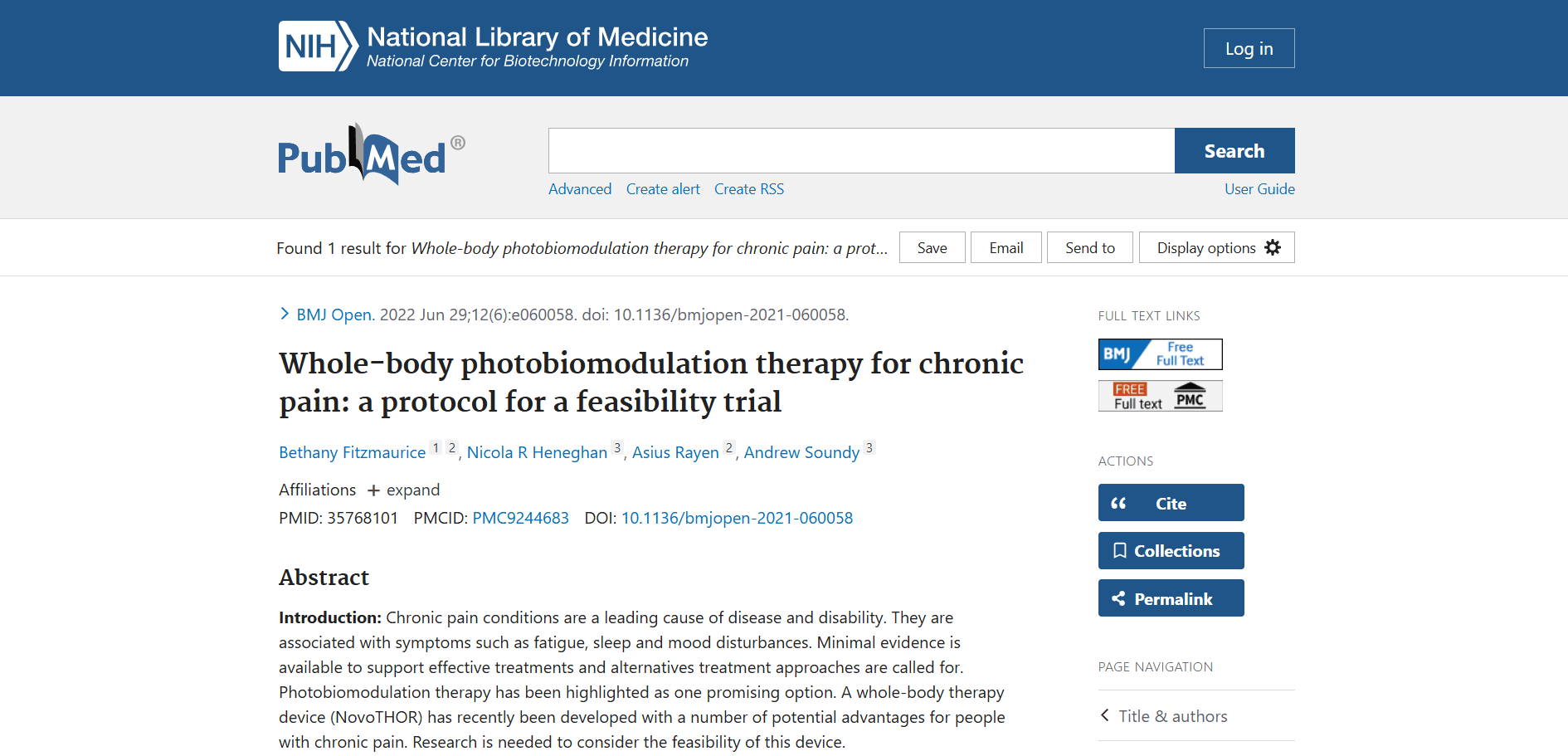
The Science: Measuring Light the Right Way
Measuring True Irradiance requires precision equipment and process control, not guesswork. The gold standard instrument is a laboratory-grade spectroradiometer with good cosine correction that is calibrated with traceability back to a National Metrology Institute (NMI). A recent article published by LightLab International offers additional details on Verification of Average Irradiance.
Why a Spectroradiometer?
Because it doesn’t just measure brightness, it analyzes the full spectrum of light energy emitted by the device. It reads:
Power density (irradiance) in mW/cm², and not by grouping ranges, but by measuring each wavelength.
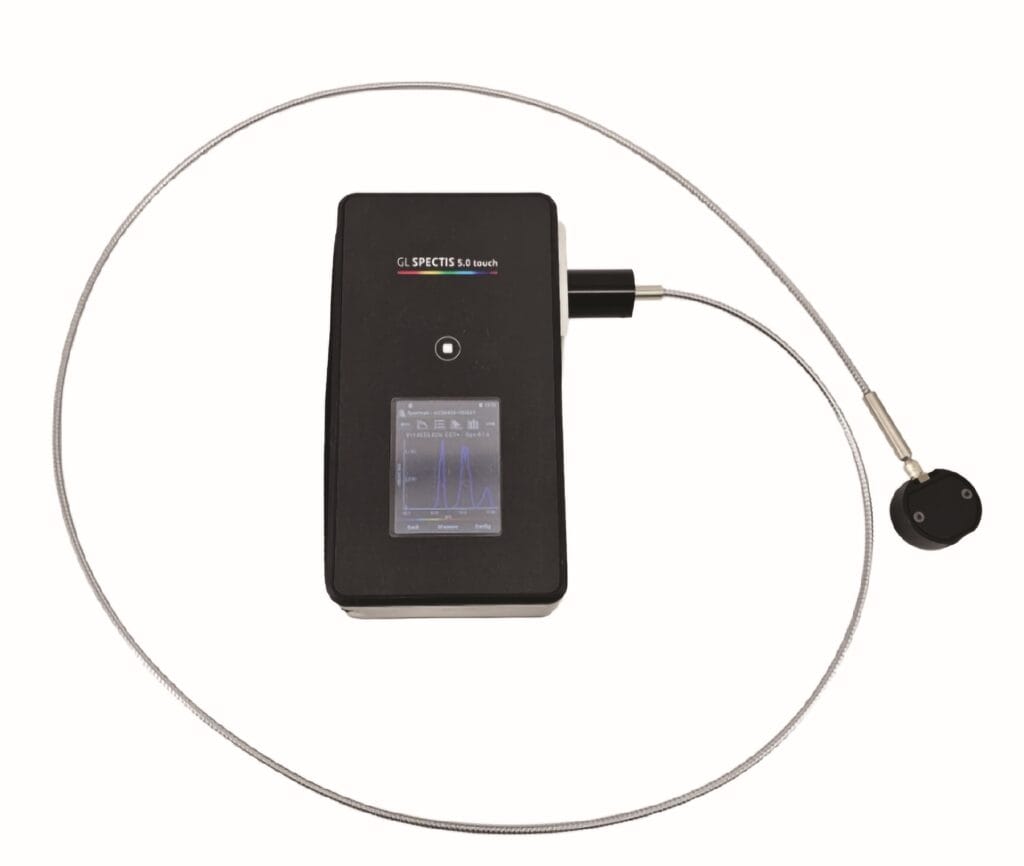
The two most common lab-grade spectroradiometers are: Gigahertz-Optik BTS2048-VL-TEC and GL Spectis 5.0. These types of spectroadiometers cost over $24,000.00 each and require annual laboratory calibration and certification. Both of these spectroradiometers provide accurate irradiance that can be used to calibrate dosing.
What Is Cosine Correction?
Cosine correction ensures the sensor reads light accurately from all angles that strike the surface, just like your skin does. Without it, results can be dramatically skewed by reflections and angles.
Why Solar and Laser Power Meters Get It Wrong
Here’s where things go sideways in much of the industry. Many companies use solar meters, photodiode meters, or pulsed laser meters to measure their devices, and then proudly publish those artificially high numbers as “irradiance.” The problem? Those devices were never designed for measuring continuous irradiance, multi-wavelength LED light therapy systems.
These types of meters:
- Only read broadband light or pulsed laser light, not each specific wavelength.
- Often inflate readings by 2–5 times due to spectral mismatch, grouping, or measuring heat signatures
- Lack of cosine correction
- Measure total light and not the usable energy absorbed available to be absorbed by tissue
The result? Wildly exaggerated numbers that look great on marketing brochures, but don’t represent the real energy your body can receive. True Irradiance eliminates this confusion by using scientific, standardized, and reproducible methods.
Examples of meters that should not be used are: Any Solar, laser, or pulsed laser meter. Solar meters cost between $80.00 and $200.00, laser and pulsed laser meters can cost up to $4,000.00. Neither of these devices will yield a reading consistent with the measurements used in clinical research.
The True Irradiance Measurement Process
The True Irradiance measurement standard was developed to provide repeatable, meaningful results for red light therapy beds and panels.
Here’s how it works:
Setup – The red light bed is powered on, and the top canopy (if present) is turned off. Only the bottom portion, the one directly under the user, remains active.
Measurement Plane – The test surface is at the acrylic, where the light actually touches the skin.
15 Measurement Points – Using a lab-grade and calibrated spectroradiometer, 15 evenly spaced points are tested across the bottom surface of the bed. This is done to arrive at an accurate average.
Data Collection – Each point records irradiance (mW/cm²) across all active wavelengths.
Average Calculation – The readings are averaged to produce the bed’s overall True Irradiance value.
This average reflects what your body actually receives, not theoretical output or reflections, but real, delivered energy.
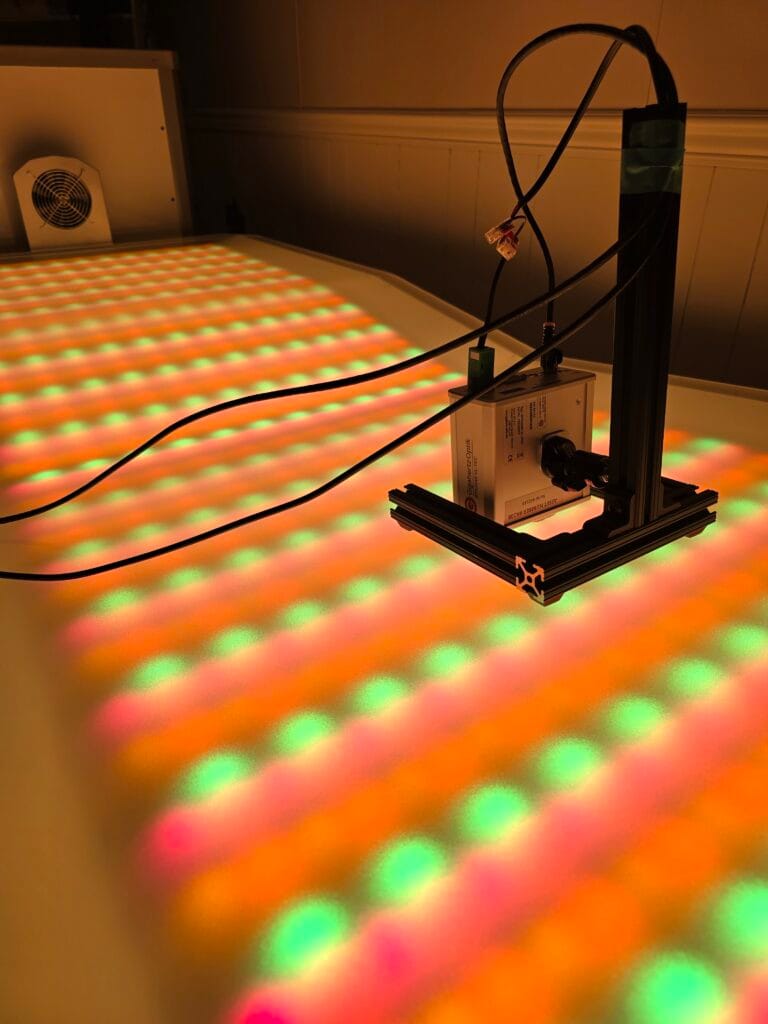
Why True Irradiance Matters
Knowing your True Irradiance value allows you to:
- Calculate accurate dosing (Joules/cm²) for each session (link to dosing calculator)
- Ensure consistency across sessions and users
- Compare devices using standardized, scientific data
- Build trust through transparency and validated testing
For wellness professionals, this ensures clinical accuracy and regulatory alignment. For users, it means you can finally understand exactly what your body is receiving, no hype, no inflated numbers, just the truth. Try our Red Light Bed Dose Calculator to get best therapeutic results.
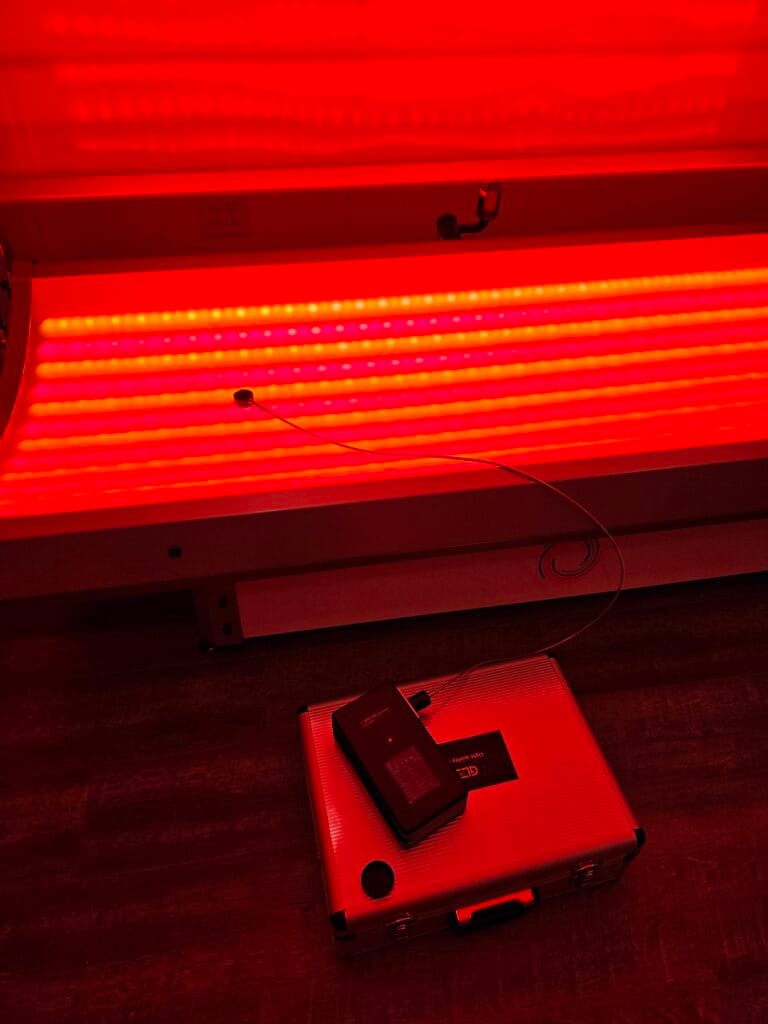
The Bottom Line
True Irradiance isn’t just a term, it’s a commitment to integrity and accuracy in light therapy.
By combining scientific-grade instruments, standardized test protocols, and transparent reporting, we can finally separate marketing claims from measurable reality.
So the next time you see a red light therapy device boasting enormous irradiance numbers, ask: “Was that measured with a lab-grade spectroradiometer and cosine correction at the skin surface?”
If not, you already know the answer: it’s not True Irradiance.
Integrity First
In the world of light therapy, integrity must always take precedence over marketing. Anyone can claim big numbers, but only those who test with honesty, accuracy, and transparency can claim truth. True Irradiance isn’t proprietary, it’s a process that any manufacturer can achieve by using the right equipment and standardized testing methods.
What truly defines integrity is the willingness to verify those results through independent third-party laboratory testing, using labs that employ the correct equipment. This ensures every published value reflects real science, not sales hype, giving professionals and clients complete confidence that the light energy delivered is exactly what’s promised.
References
[1] Fitzmaurice B, Heneghan NR, Rayen A, Soundy A. Whole-body photobiomodulation therapy for chronic pain: a protocol for a feasibility trial. BMJ Open. 2022 Jun 29;12(6):e060058. doi: 10.1136/bmjopen-2021-060058. PMID: 35768101; PMCID: PMC9244683.
